Early Boylston Street Yard
Background Since the late 1800’s, the Boylston Street Yard has played a vital role in providing electrical power to the city of Los Angeles. One of Southern California’s first electric utilities, West Side Lighting Company, used this site to build their first large power plant in 1896. The site was chosen because of its proximity to the hub of a very fast growing city. In a short span of 10 years (1890 - 1900), Los Angeles saw its population increase over 100% (50,395 to 102,479). Over the years the Boylston facility has been used by the West Side Lighting Company, Los Angeles Edison Electric, Southern California Edison, and the Los Angeles Department of Water and Power, which has occupied the site since 1940. |
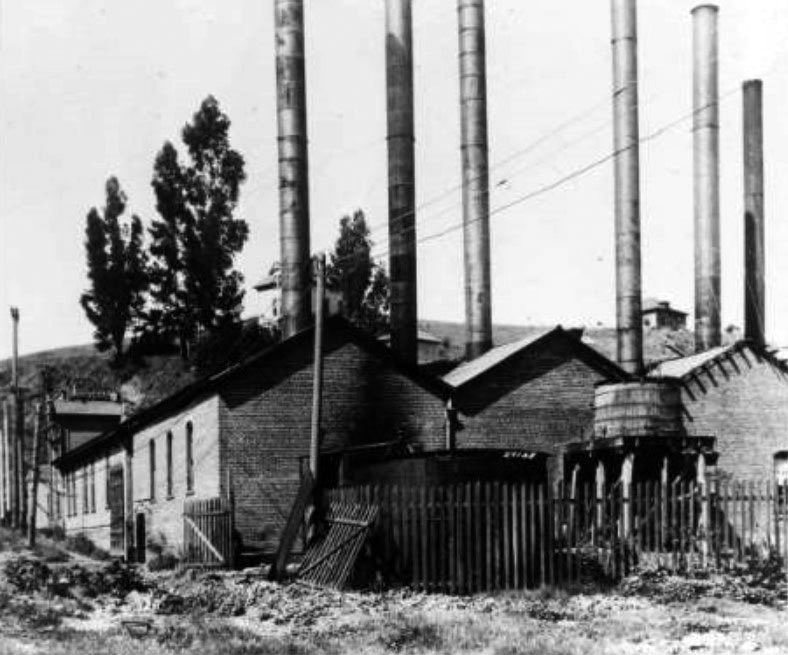 |
|
| (1896)^* – View looking south toward 2nd Street where the Los Angeles No. 1, Boylston Steam Plant is seen. The power plant was built in 1886 by the Westside Lighting Company and is located on the northwest corner of 2nd and Boylston streets. |
Historical Notes In 1896, West Side Lighting Company was organized by private investors to provide another source of electricity for the city of Los Angeles and fringe areas. In their first year of operations West Side built at least two power plants. Its first was located on Vermont and 22nd Street; and its second, a much larger one, was built on the northwest corner of 2nd and Boylsten streets (seen above). In only their second year of existence (1897), West Side Lighting merged with the newly established private company, Los Angeles Edison Electric, which owned the rights to the Edison name and patents, especially the underground DC-power rights++. The merged company took on the Edison name. ++ An underground system and technology was crucial at that time, since the city voted in a resolution limiting the installation of new overhead utility poles due to excessive overhead wire congestion. Los Angeles Edison Electric installed the first major DC-power underground conduits system in the Southwest. |
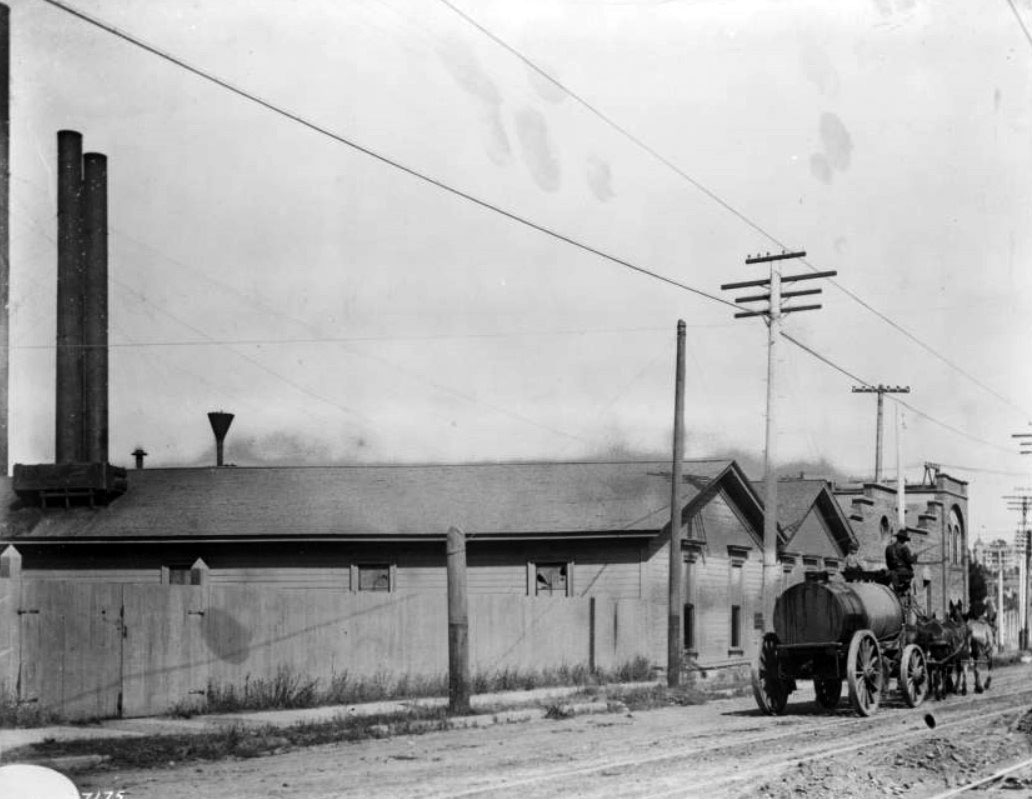 |
|
| (ca. 1900)*^ - View of Second Street looking east toward Boylston Street showing the Edison Electric Company Steam Plant No. 1. A man with a horse-drawn tanker wagon is making his way away from the camera along the unpaved road, with the Edison Electric power house behind a picket fence to his left. |
Historical Notes Between 1897 and 1906 the power house was in use as Edison Electric Company Steam Plant No. 1. This was Edison's first power plant located in the City of Los Angeles. |
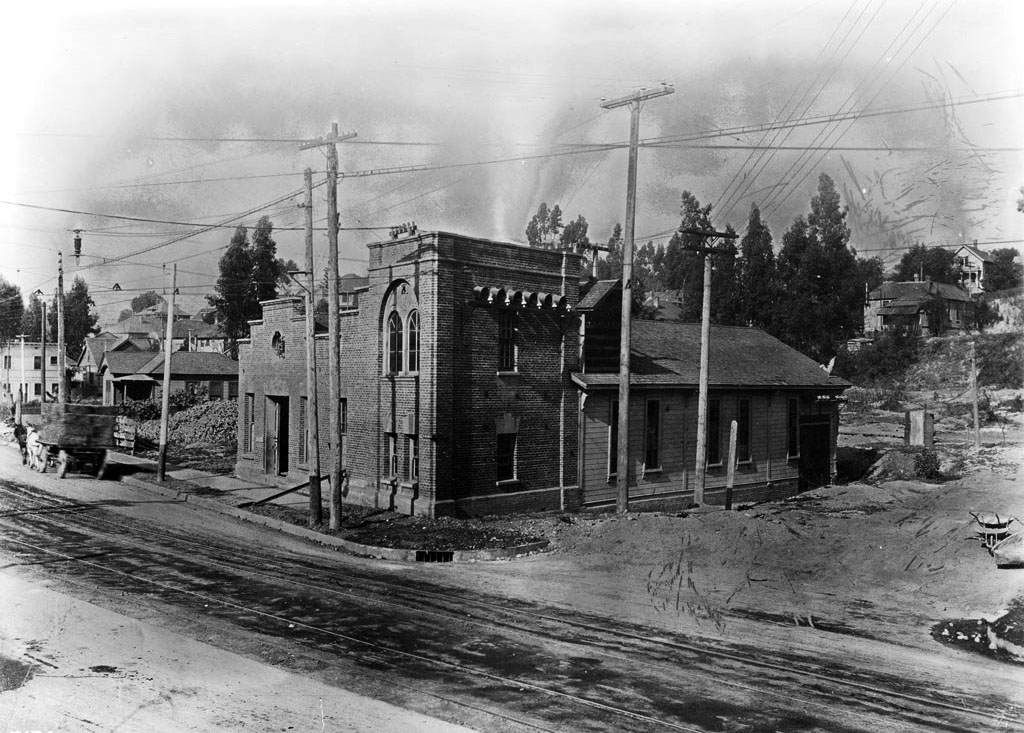 |
|
| (ca. 1906)*^ - View showing the 'old' Edison Electric Steam Plan No. 1 located on the northwest corner of 2nd and Boylston streets. The auxiliary buildings with clapboard veneers and smokestacks that once were attached to the corner brick building have been removed.The two-story brick utility building now stands next to a cleared lot in front of an unpaved road in which streetcar rails can be seen, surrounded by utility poles. |
Historical Notes At the time of this photo the brick building at the corner of 2nd and Boylston streets, once part of Edison Electric Steam Plant No. 1, was no longer being used as a power plant. It now was serving as an Edison Electrical Sub-Station. |
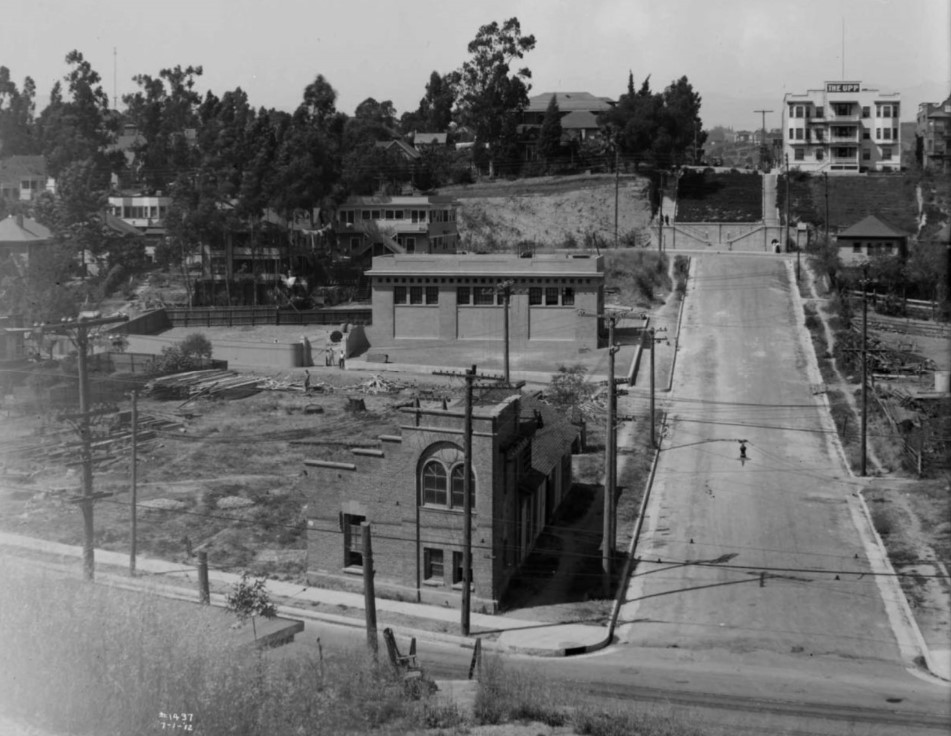 |
|
| (1912)*# – View looking north on Boylston Street from above 2nd Street. The 'old' Edison Steam Plant No. 1, later converted to a Sub-Station, is on the N/W corner. A newer, more modern Sub-Station stands a couple hundred feet behind the old one at center of photo. |
Historical Notes In 1909, Los Angeles Edsion Electric changed its name to Southern California Edison (SCE). |
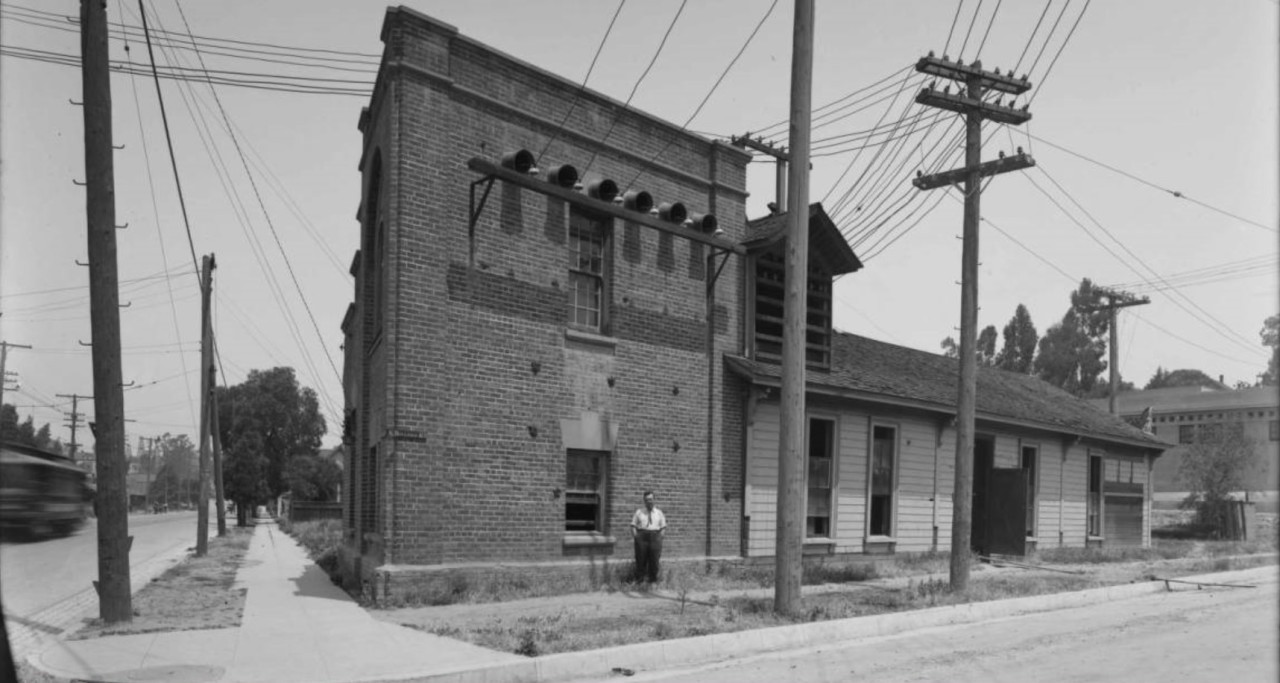 |
|
| (1912)*# – View showing a man posing in front of Edison Steam Plant No. 1. The plant was used to generate power for only 10 years (1896 - 1906) at which time it was converted into a Sub-Station. But that didn't last long. A newer, more modern, Sub-Station was constructed to replace the original building which would then be demolished to make way for a new SCE Engineering Building. |
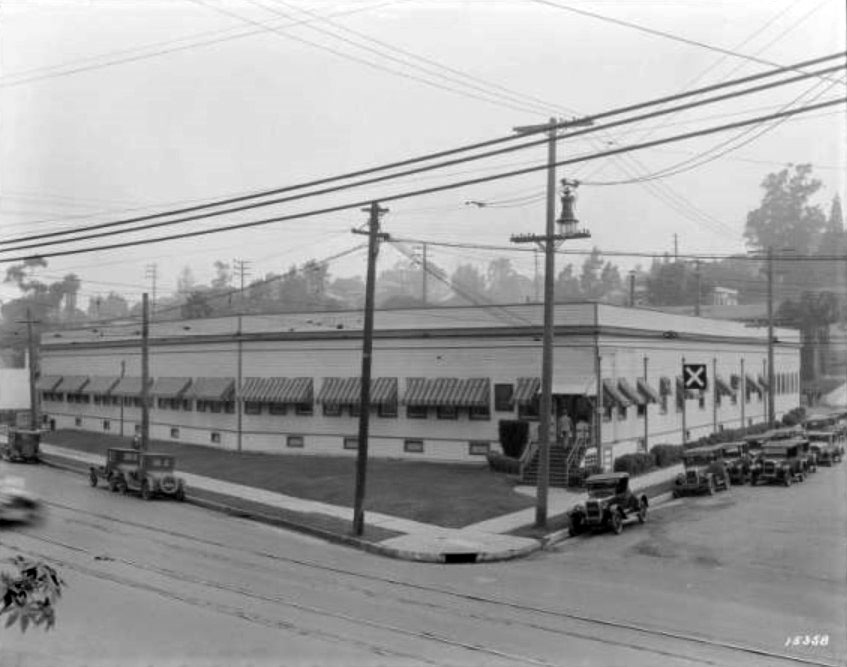 |
|
| (1928)^* – View looking toward the northwest corner of 2nd and Boylston streets. SCE's Boylston Engineering Building is seen at the same location where its first LA Steam Plant once stood. |
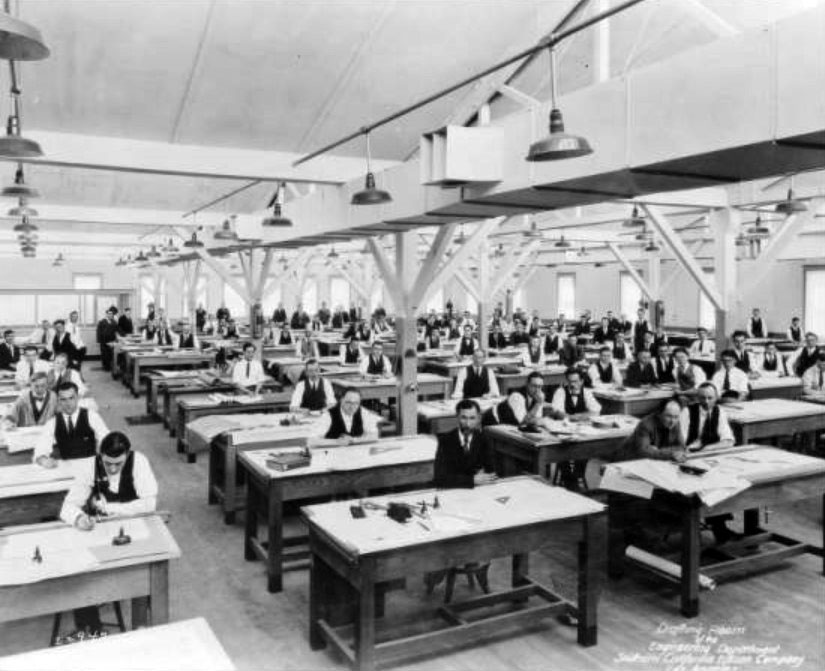 |
|
| (1922)^* - Interior view of the Edison Boylston Engineering Building showing the Drafting Room, with designers and draftsmen as far as the eye can see. |
.jpg) |
|
| (1937)*^ - View looking north along Boylston Street from the bluff just south of Glendale Boulevard. An empty lot is seen where Edison's Engineering Building once stood. SCE's Sub-Station can be seen at right-center of photo. |
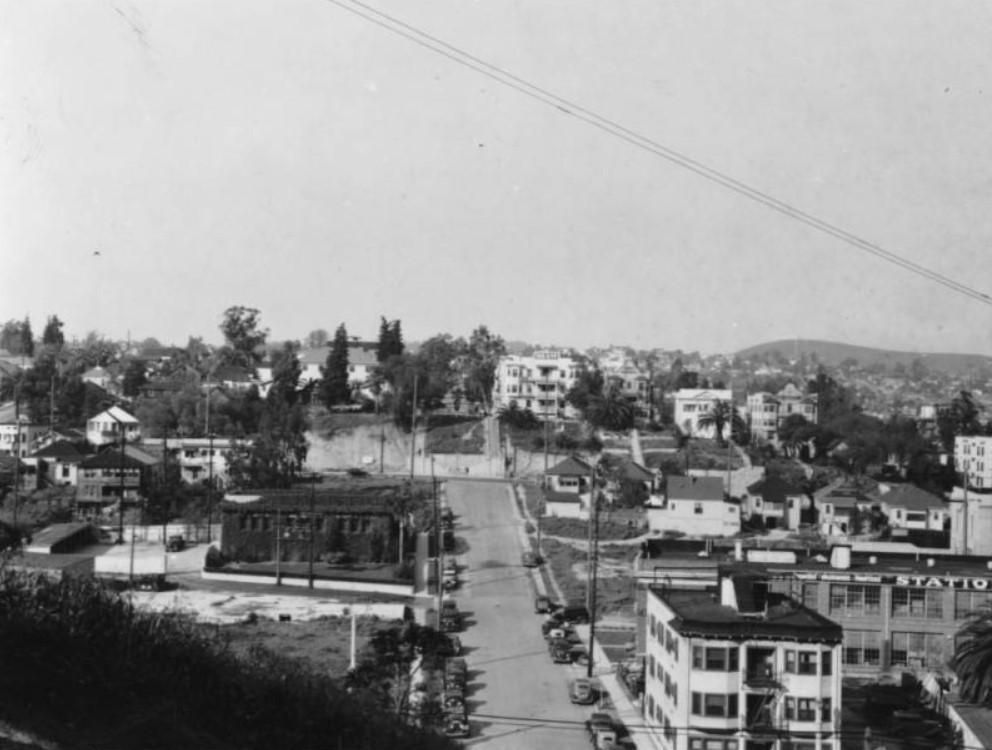 |
|
| (1937)*^ - Closer view looking north on Boylston Street. The 1912-built Edison Sub-Station can be seen at center-left. The hill in the background is filled with apartment buildings and homes. Today this same hill is occupied by Belmont High School. |
DWP Takes Ownership of the Boylston Facility
As late as 1936 three separate utilities provided electricity within the Los Angeles City boundaries (Southern California Edison, Los Angeles Gas and Electric Corporation, and the Los Angeles Bureau of Power and Light). That same year, after Los Angeles received its first power from Hoover Dam, the City Charter was changed to give the Bureau of Power and Light exclusive rights to be the electric service provider for the city of Los Angeles. That left both SCE and LA Gas & Elec. Corp out of the picture and they now could no longer sell their power to customers within the City. In December 1936 Los Angeles city voters approved a charter amendment authorizing the Bureau of Power and Light to issue revenue bonds in the amount of $46 million to purchase the electric system of Los Angeles Gas and Electric Corporation. The gas side of their business would evolve into Southern California Gas Co. It took SCE and LADWP (previously Bureau of Power and Light++) two years to complete negotiations on the division of territory between the two utilities. And In 1939, SCE swapped the remainder of its Los Angeles distribution system including the Boylston Yard for facilities outside the city limits (formerly owned by Los Angeles Gas and Electric). At this point LADWP became the sole electric service provider in the City. ++ In 1937, the Bureau of Power and Light consolidated with the Bureau of Water Works and Supply and became the Los Angeles Department of Water and Power (LADWP). Click HERE to see more in First Electricity in Los Angeles. |
DWP Moves Into the Boylston Facility
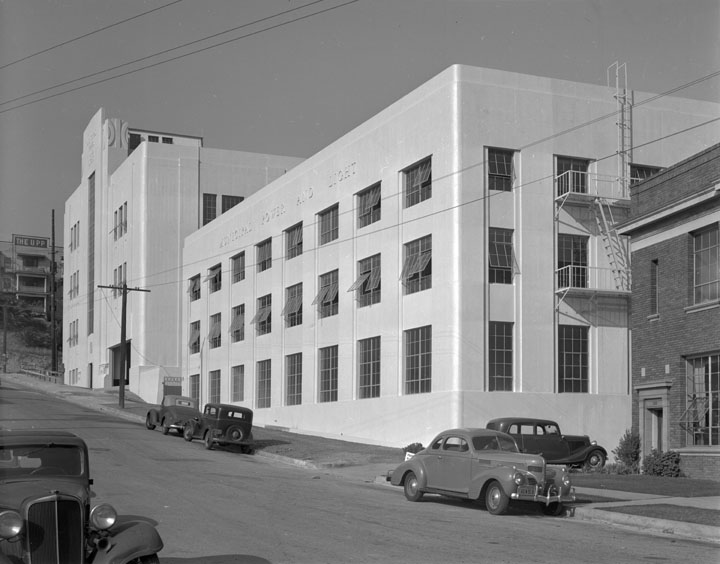 |
|
| (1940)* - View showing the east side of Boylston Street where two new DWP buildings now stand. These are the garage and an office building that will be occupied by parts of three DWP Divisions. |
Historical Notes In July 1940, DWP personnel of three divisions (Operating, General Plant, and Commercial Divisions) moved into new quarters in the recently completed stuctures at the Boylston Yard. |
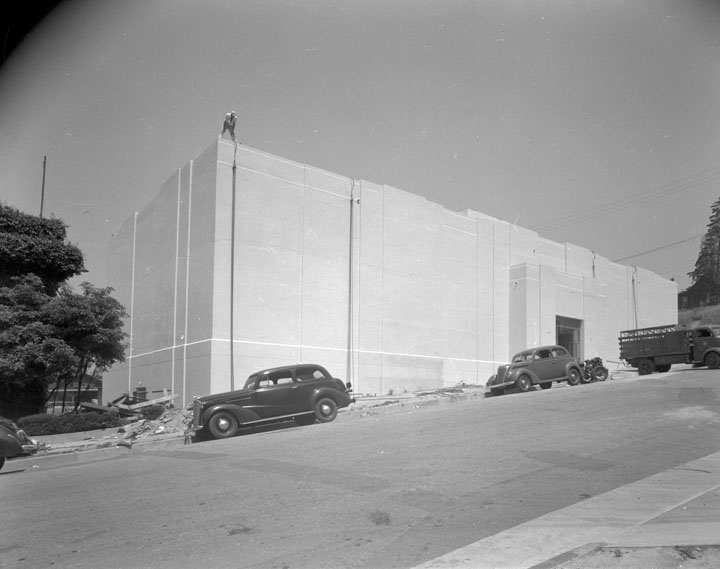 |
|
| (1941)* - View showing the newly completed DWP Load Dispatchers Headquarters (LDH), built on the west side of Boylston Street. Note that there are no windows and only one door incorporated in the unique building design. |
Historical Notes The Boylston Street complex was the control center for the DWP electrical system for many years. The Load Center, a windowless building at 115 S. Boylston Street (before the department closed the street to public), opened in 1941. |
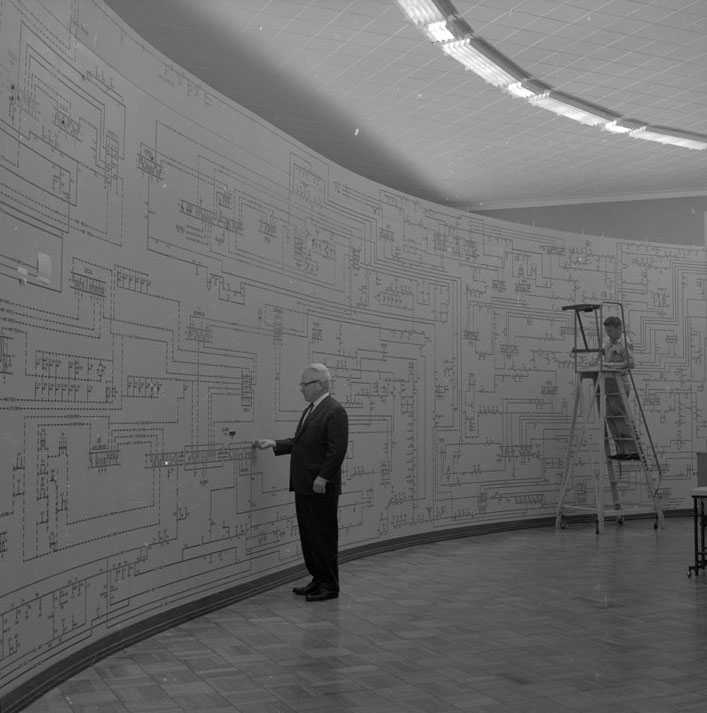 |
|
| (1968)* - View showing the Load Dispatcher Board at the LDH Building. |
Historical Notes The Load Center had an auditorium-like room with a 60 foot-wide board showing the system’s entire distribution and high voltage network. It was upgraded in 1956, and the board was extended to 78 feet. |
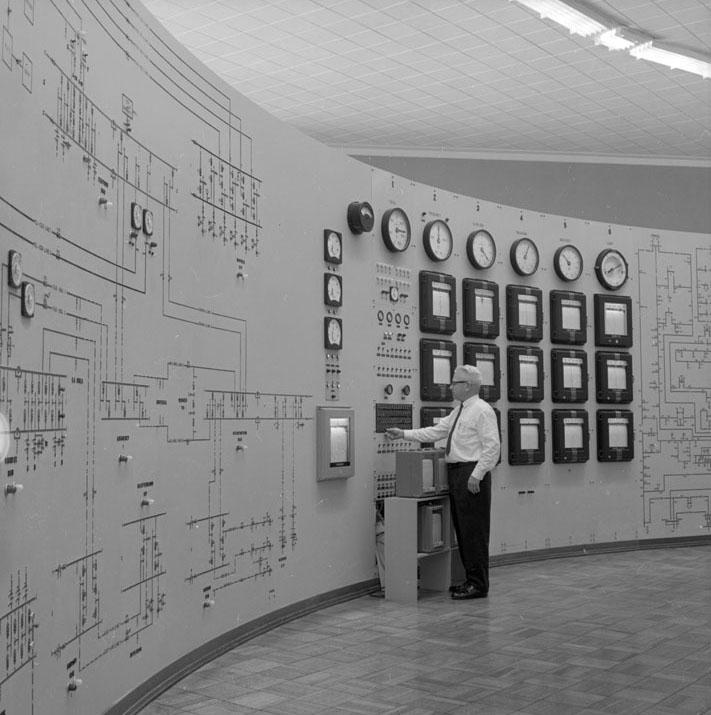 |
|
| (1968)* - Another view of the Load Dispatcher Board at Boylston Street. |
Historical Notes The auditorium-like room was the “nerve center” of the entire municipal electric system, displaying schematic diagrams of every line, distributing station and switch in the department’s 34,500 volt system, as well as all the Department’s high voltage transmission lines, receiving stations and generating plants, including Hoover Power Plant. |
.jpg) |
|
| (1969)* - View showing the Load Dispatcher Office at Boylston Street. |
Historical Notes Their prime function of the Control Center was to see that there was always enough electric energy flowing through the Power System to meet all of the demands of the City. Another important function was the preparation, usually several days in advance, of load schedules for the various generating plants. Operations control is now conducted out of a new state-of-the-art Energy Control Center located at another high security site. |
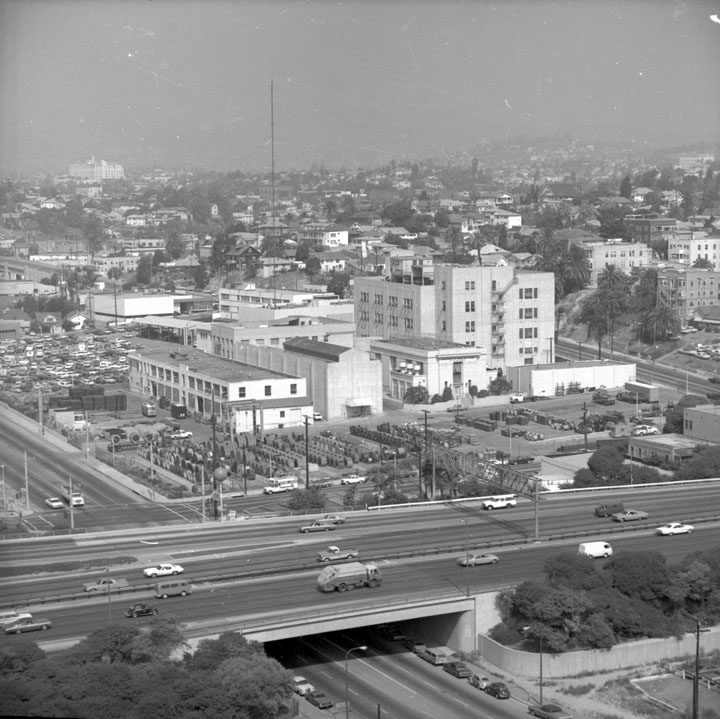 |
|
| (1969)* - Aerial view looking northwest showing the DWP Boylston Yard wtih the Harbor Freeway in the foreground. 2nd Street runs under the freeway. Beaudry Avenue can be seen between the freeway and Boylston Yard. |
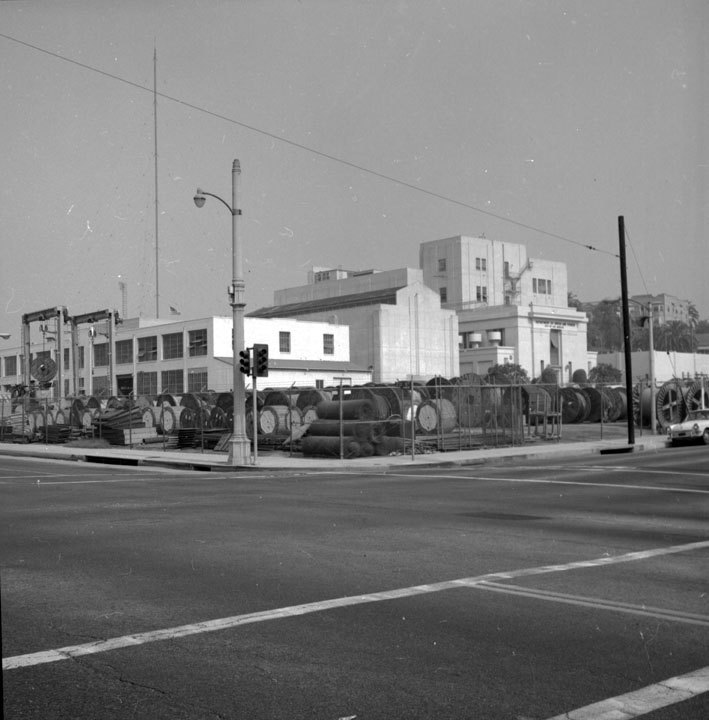 |
|
| (1969)* - View looking toward the northwest corner of 2nd and Beaudry streets with LADWP's Boylston Yard in the background. |
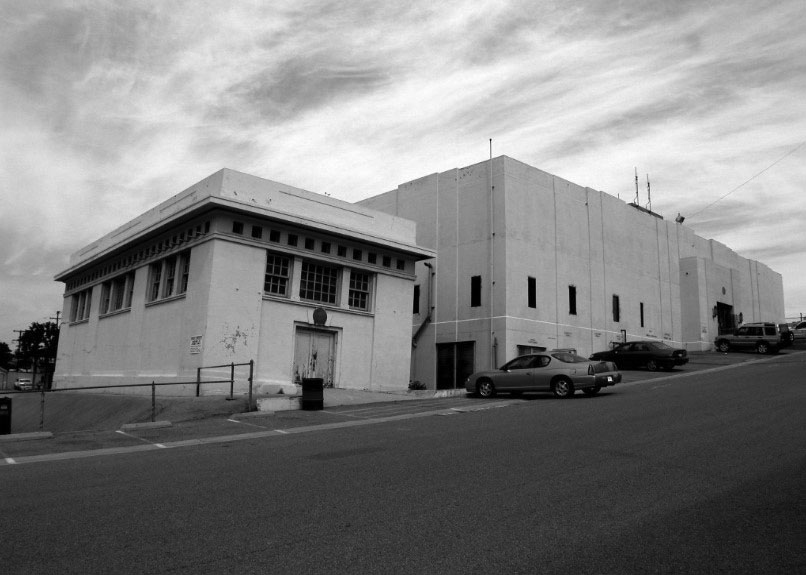 |
|
| (ca. 2010)#^ – View showing the old SCE Sub-Station next to the old DWP Load Control Center. |
.jpg) |
|
| (2015)#* - Google street view showing the entrance to DWP's Boylston Facility at 2nd and Boylston, 1141 West 2nd Street. |
Then and Now
.jpg)
.jpg)
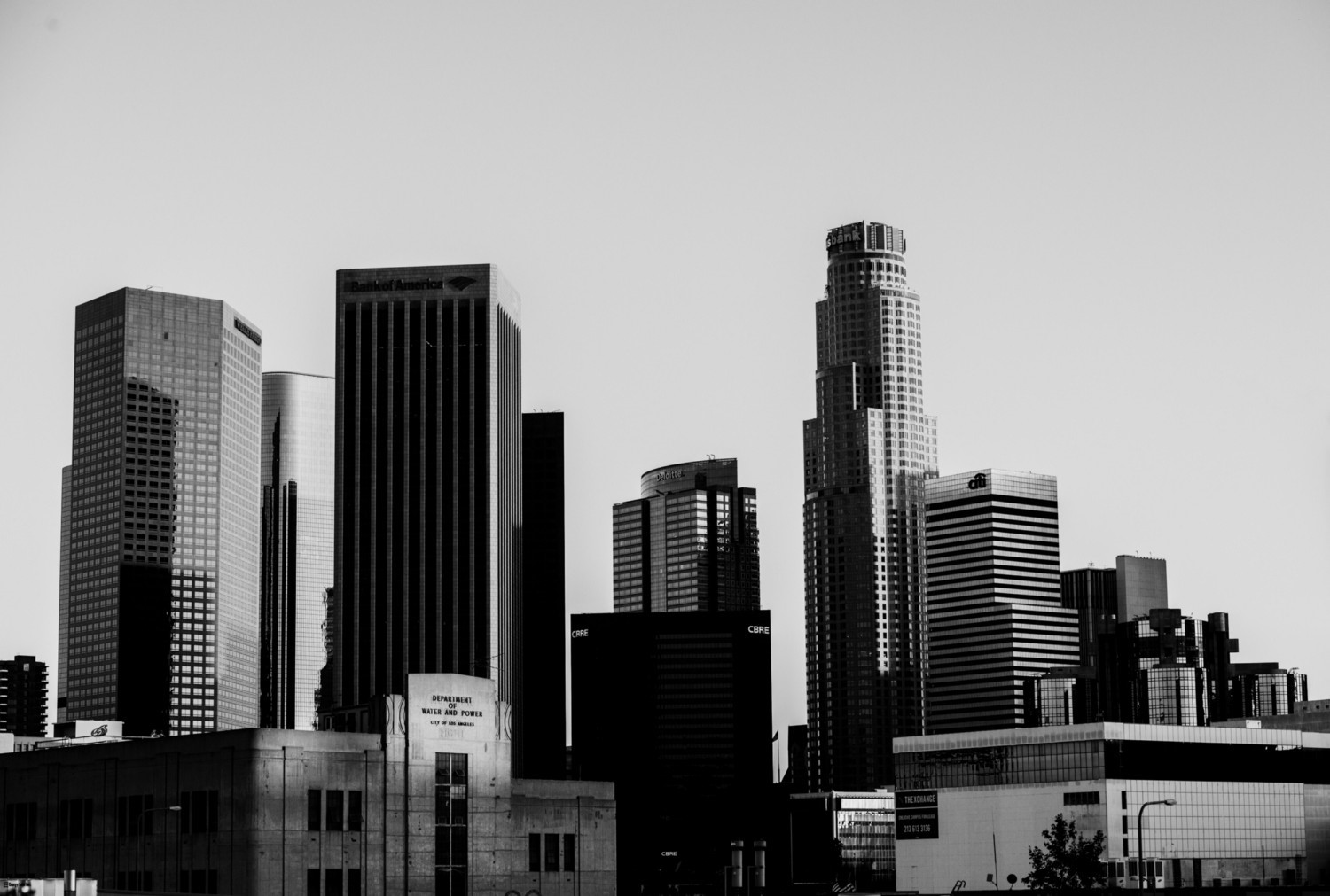 |
|
| (2016)^.^ - View looking southeast as seen from the Edward R. Roybal Learning Center showing the Boylston Street Yard with the Downtown skyline in the background. Click HERE for contemporary street view. |
* * * * * |
History of Water and Electricity in Los Angeles
More Historical Early Views
Newest Additions
Early LA Buildings and City Views
* * * * * |
References anc Credits
* DWP - LA Public Library Image Archive
** Library of Congress Image Archive
^* Huntington Digital Library Archive
*# Noirish Los Angeles - forum.skyscraperpage.com
^.^5 Epic Photography Spots in Los Angeles
< Back
Menu
- Home
- Mission
- Museum
- Mulholland Service Award
- Major Efforts
- Board Officers and Directors
- Positions on Owens Valley and the City of Los Angeles Issues
- Legislative Positions on
Water Issues
- Legislative Positions on
Energy Issues
- Recent Newsletters
- Historical Op Ed Pieces
- Membership
- Contact Us
- Search Index